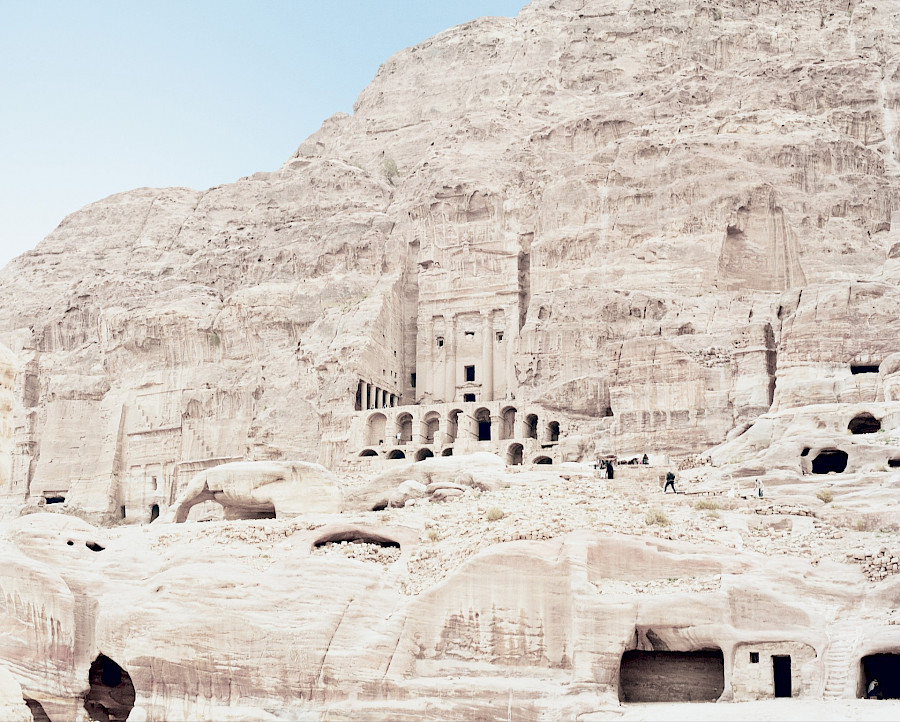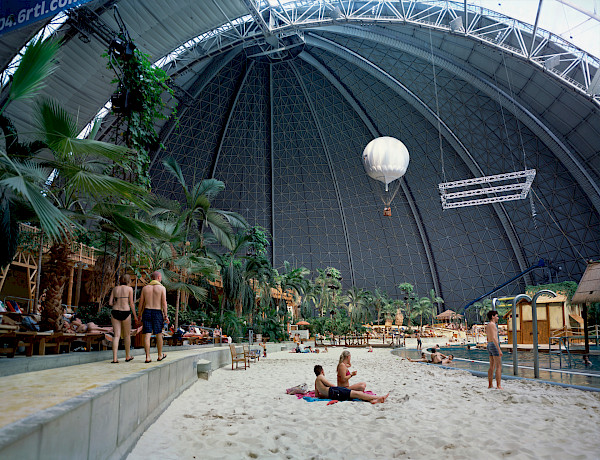
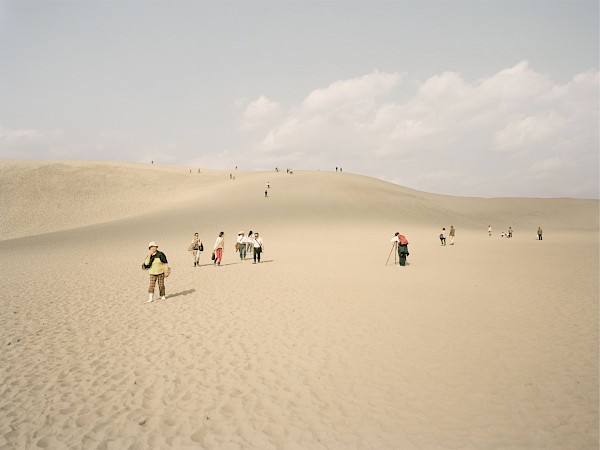
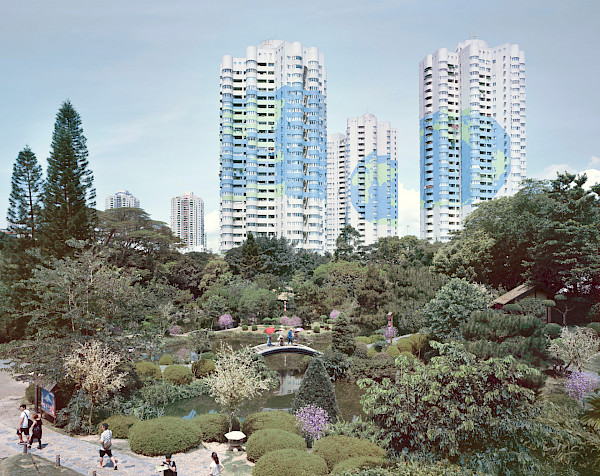
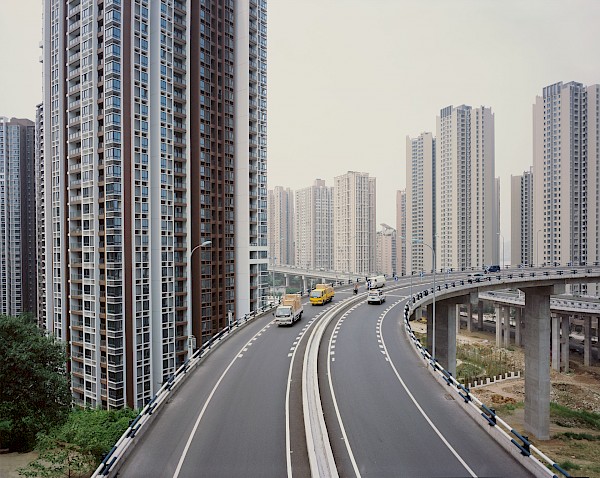
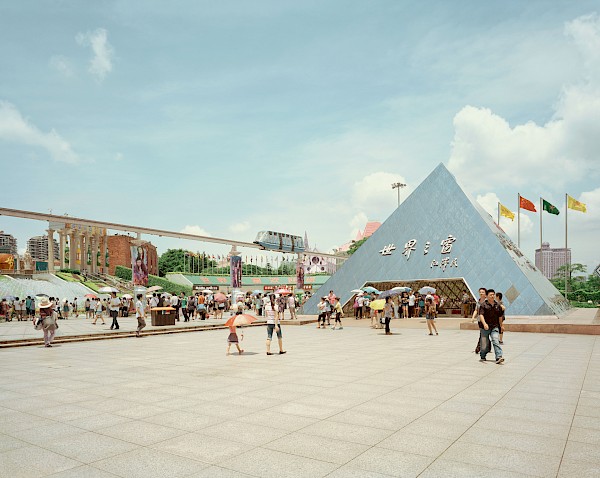
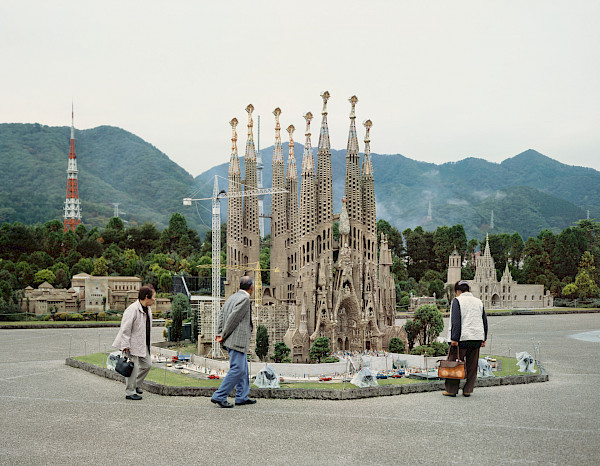
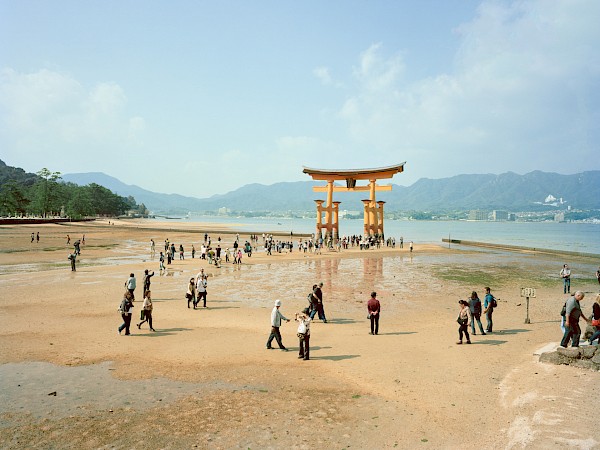
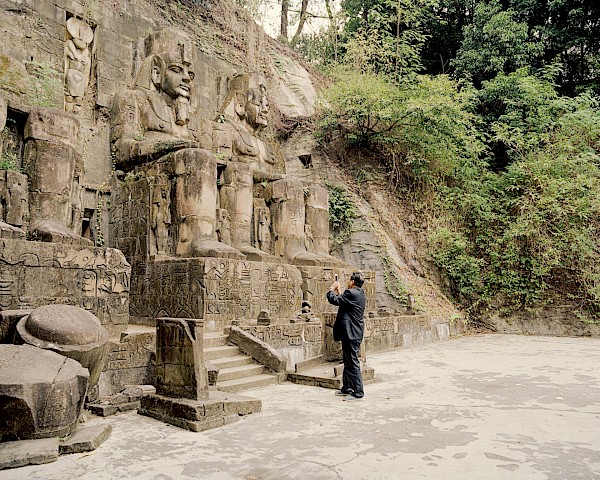
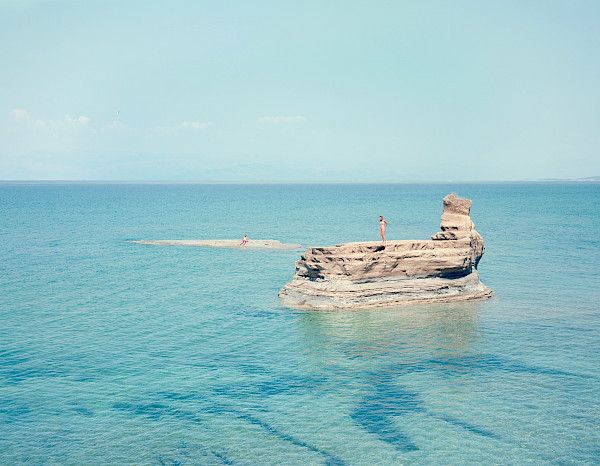
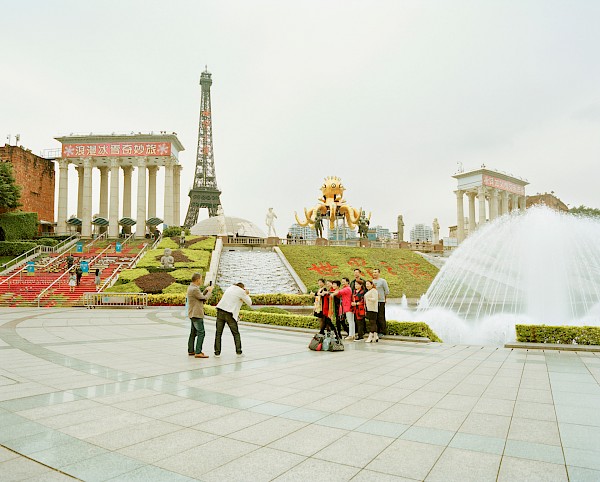
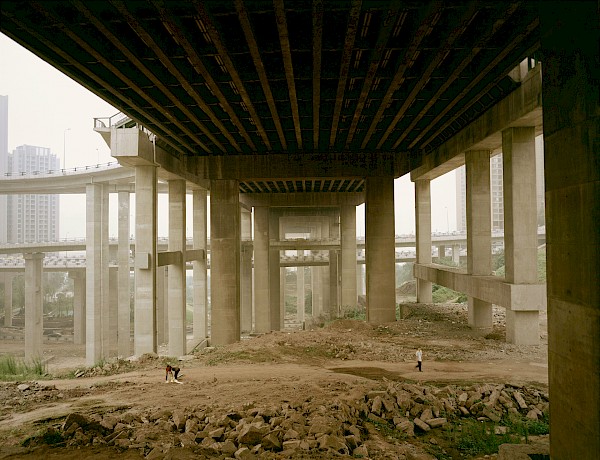
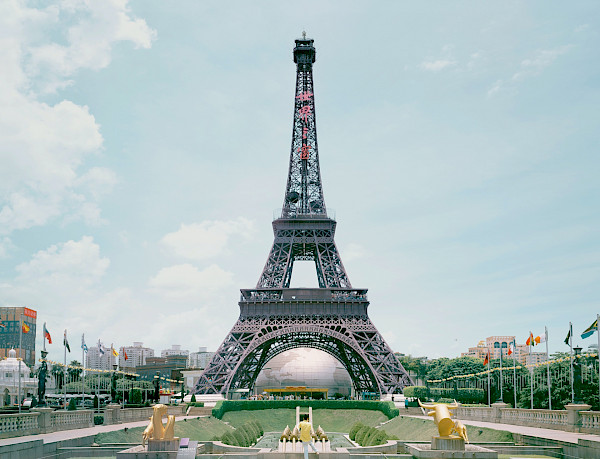
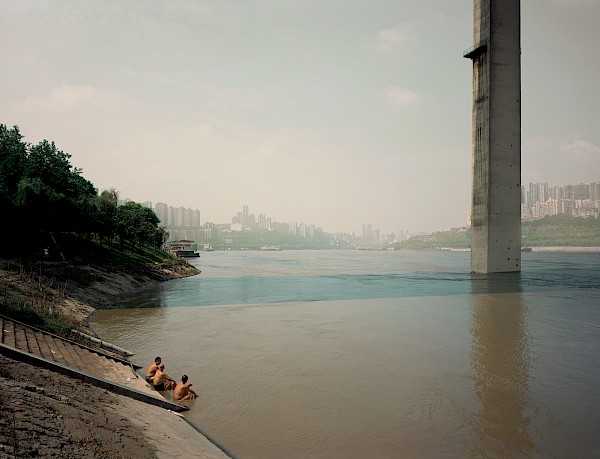
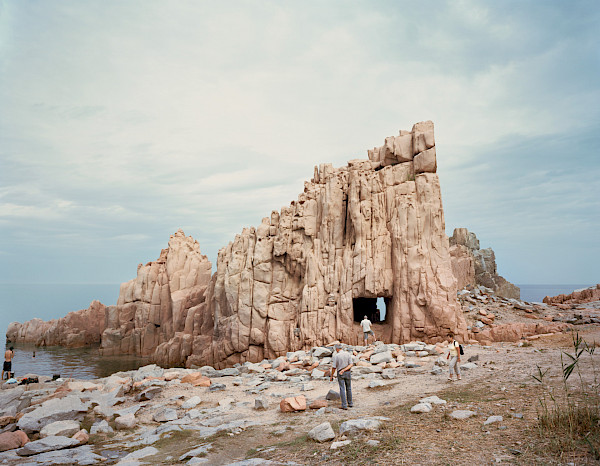
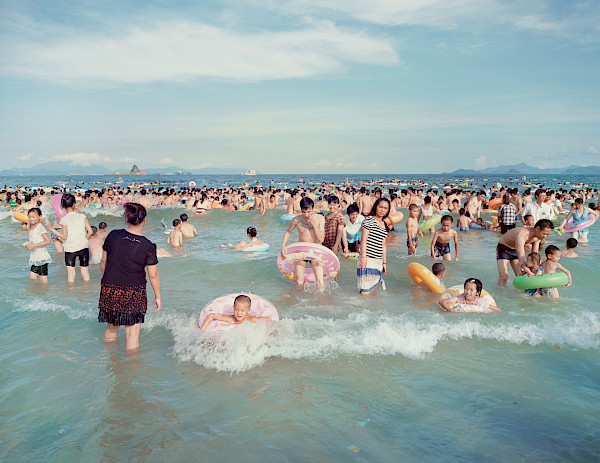
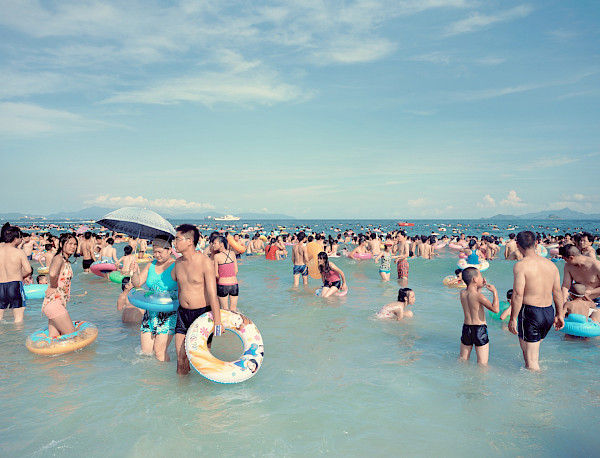
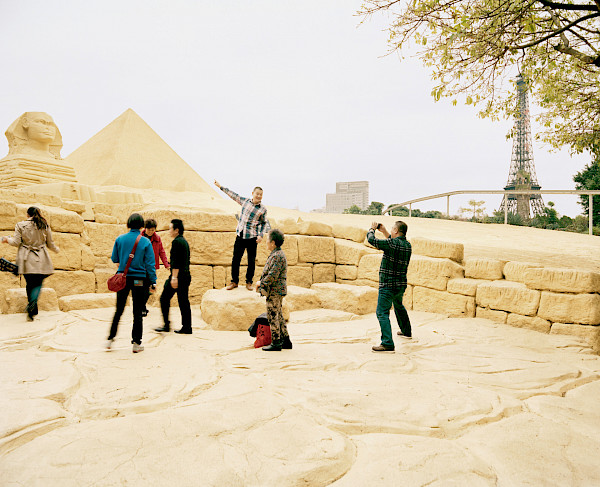
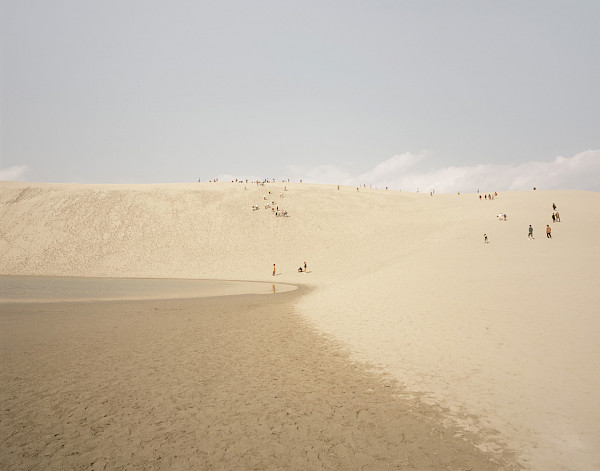
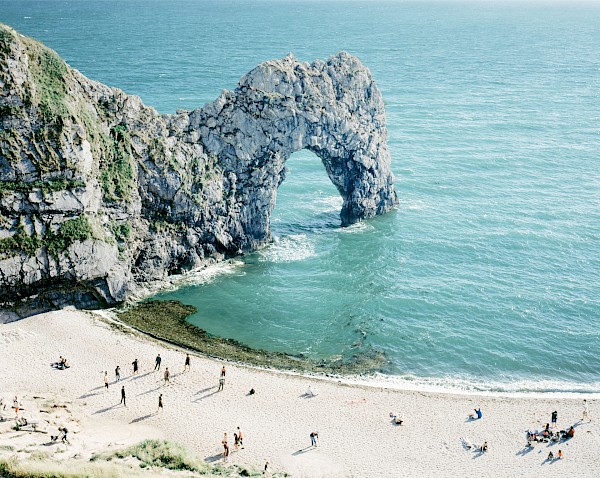
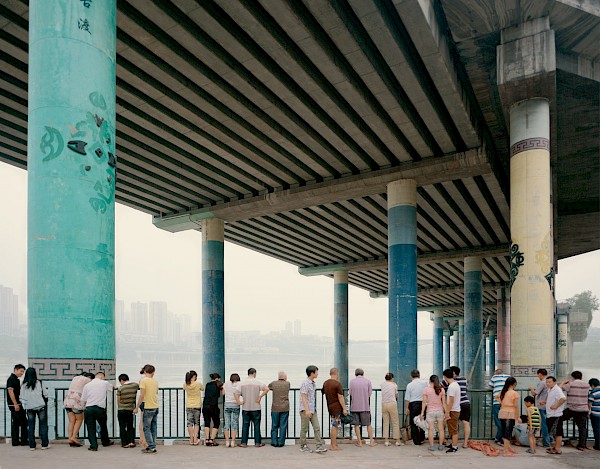
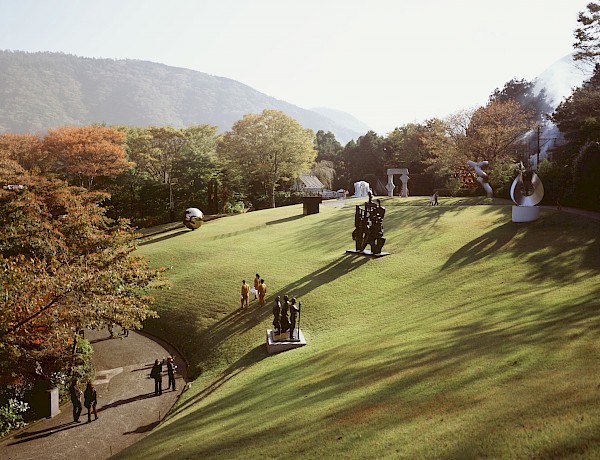
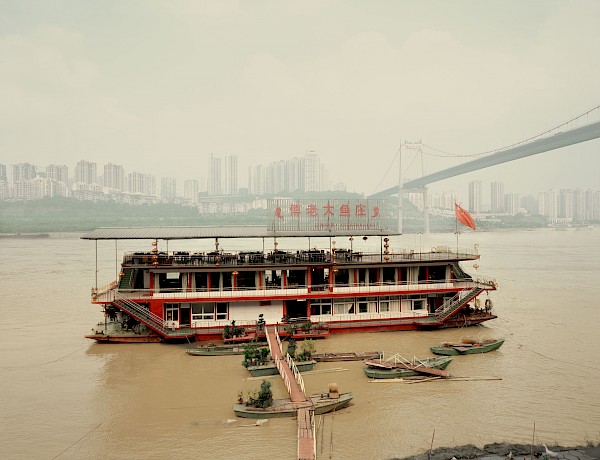
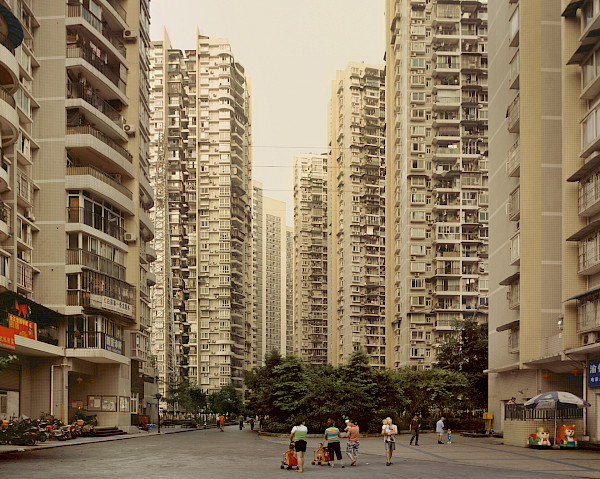
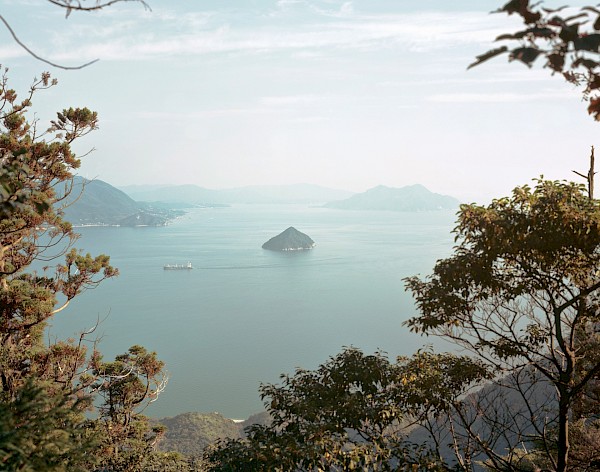
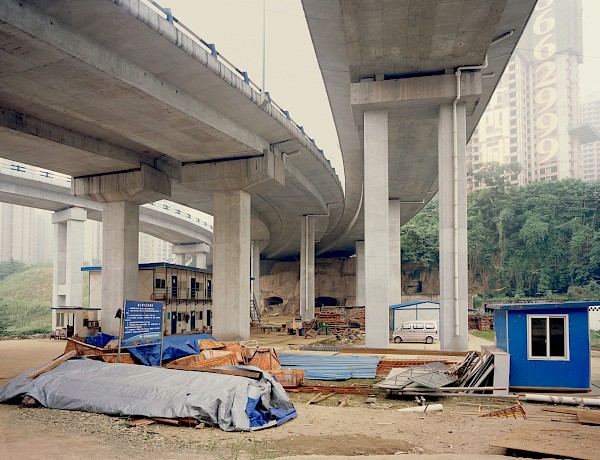
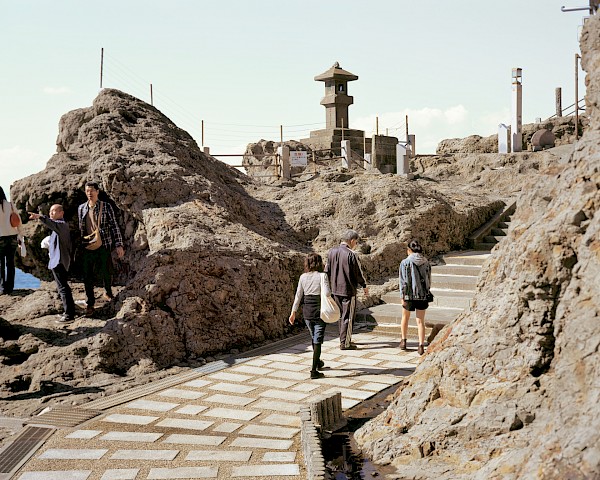
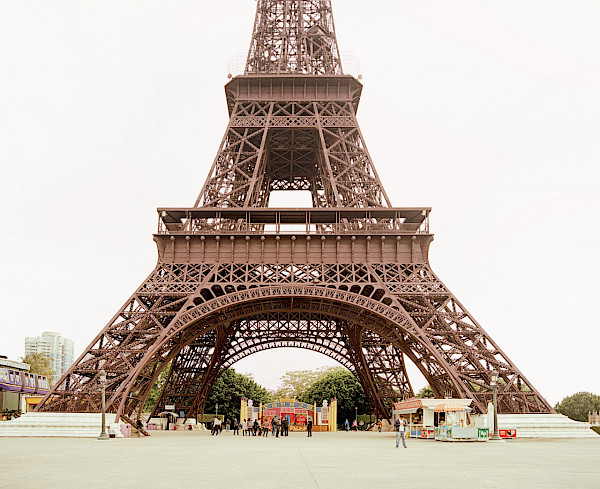
Belvedere
- Inaugural exhibition | Musée départemental Albert-Kahn, Autour du Monde, La traversée des images, d’Albert Kahn à Curiosity Boulogne-Billancourt, France, November 2021-July 2022
Taking its name from the Italian for ‘beautiful view’, Belvedere is an ongoing project that seeks to draw attention to the historical and cultural concepts of landscape deeply embedded in the development of contemporary leisure sites. Starting from the premise that constructed environments have become some of the modern world’s most elaborate tools for capturing and capitalizing upon the tourist gaze, Belvedere documents a small portion of these landscapes, the infrastructure surrounding them and the people working within them.
Travel is often imagined not only as a time for relaxation and reverie but also as an opportunity to seek out new formative experiences. Whether it is sites of historical importance or natural splendor that are visited - the Eiffel Tower, the Grand Canyon, the Devon coast or the Itsukushima Shrine - each is approached with a heightened awareness of its significance as a place of beauty and grandeur. Yet, as the American sociologist Mark Gottdiener has argued, “more than any other everyday escape, the holiday is a small-scale replica of the great escape messages of our culture.” Entrepreneurial and government developers alike have realized that by constructing pliable landscapes in which visitors are free to roam with greater ease and fluidity than found in their daily lives, they can create purpose-built representations of the past that tourists will happily play along with regardless of whether they are “authentically” natural or historical.
The term Belvedere itself has been used since the Renaissance to characterize an architecturally enhanced vantage point or even, particularly in the Baroque period, an entire building or miniature Palace that incorporates a view. Indeed, the conception of landscape has shifted historically in relation to the representative forms and geographic imaginaries of the period, as well as between and across cultural contexts. In the European tradition the representation of landscape developed from it’s initial role as a backdrop in Medieval and Early Renaissance painting to become a visual subject matter in its own right, a legacy that continues to shape understandings of nature and history but also of leisure not only in Europe but far beyond.
Belvedere examines the notion of ‘beauty’ within contemporary understandings of landscape, particularly as embedded in those sites specifically constructed as places of leisure. What is most fascinating is how narrow the shift has been between those places considered ‘beautiful’ landscapes today, attracting thousands of tourists on a daily basis, and those upheld as paragons of splendor in the Europe of the eighteenth and nineteenth Centuries. It is perhaps surprising that the Romantic movement of this period often found beauty in landscapes that attested clearly to the work of human hands, with agriculture, roads and architecture co-existed in the same referential framework as the familiar tropes of wilderness: mountains, lakes and forests.
Informed by this understanding of landscape as primarily a cultural construct and only secondarily as a natural phenomenon, these large format photographs adopt a consistent vantage point that allows a broadened perspective whereby the inconceivable scale of man-made environments and their complex entanglement with the natural world is underlined, yet the people shown serve as a visual device that provides a point of entry into the contemporary landscape of leisure. Indeed, many of the chosen vantage points provide a view upon landscapes that might not be classically considered as resplendent; environments artificially engineered to create hybrid forms of social-nature for the purpose of enjoyment, or renowned historical landmarks reproduced in new contexts to capitalize on touristic desires.
